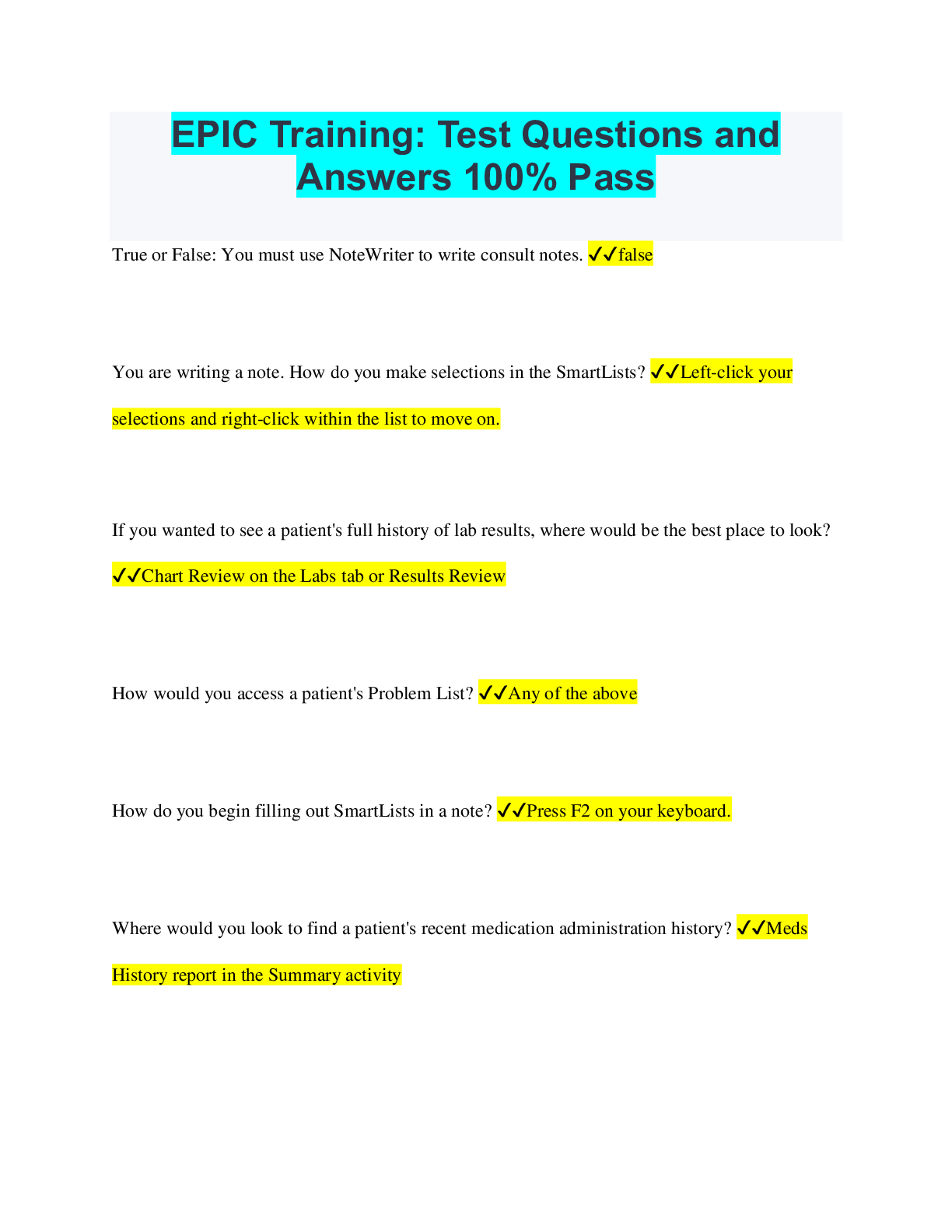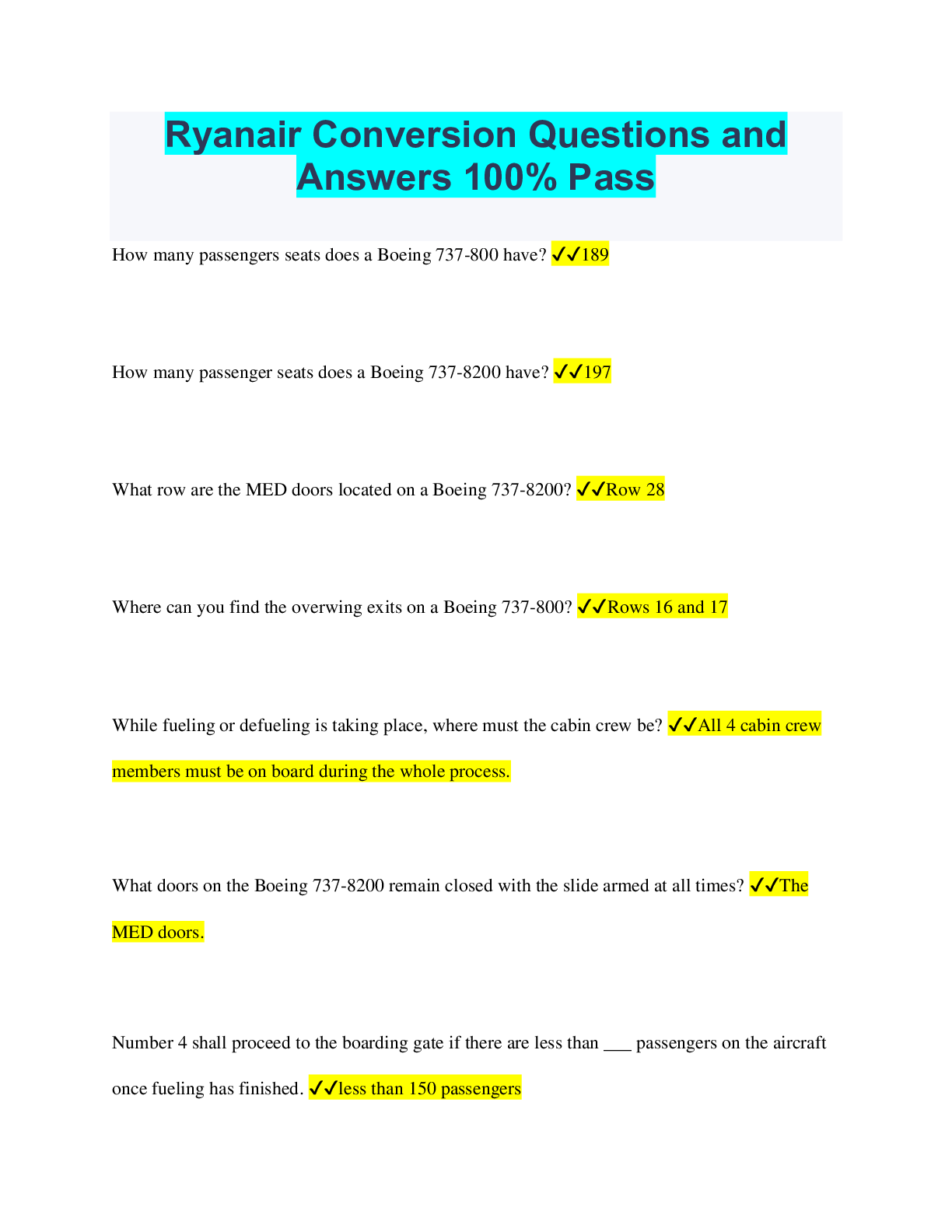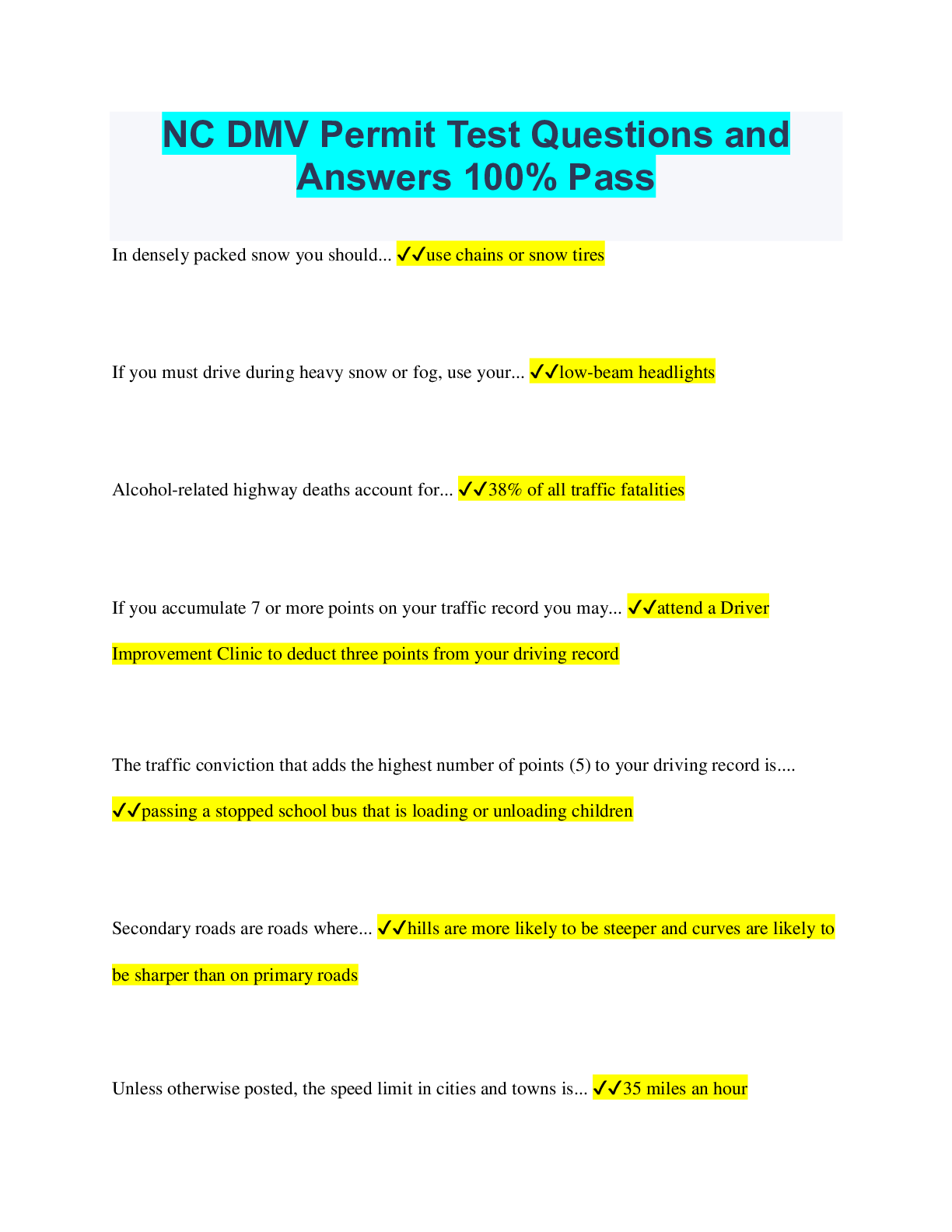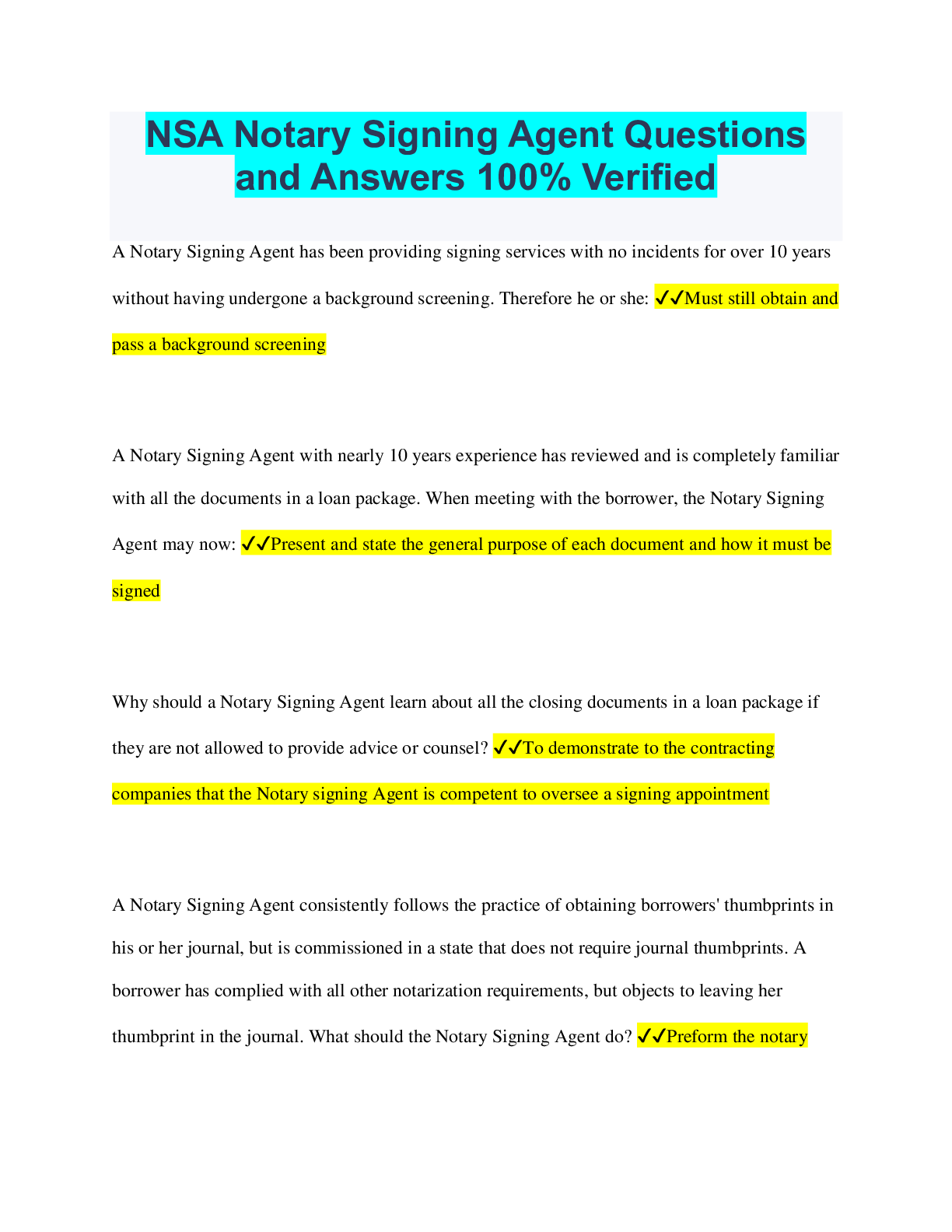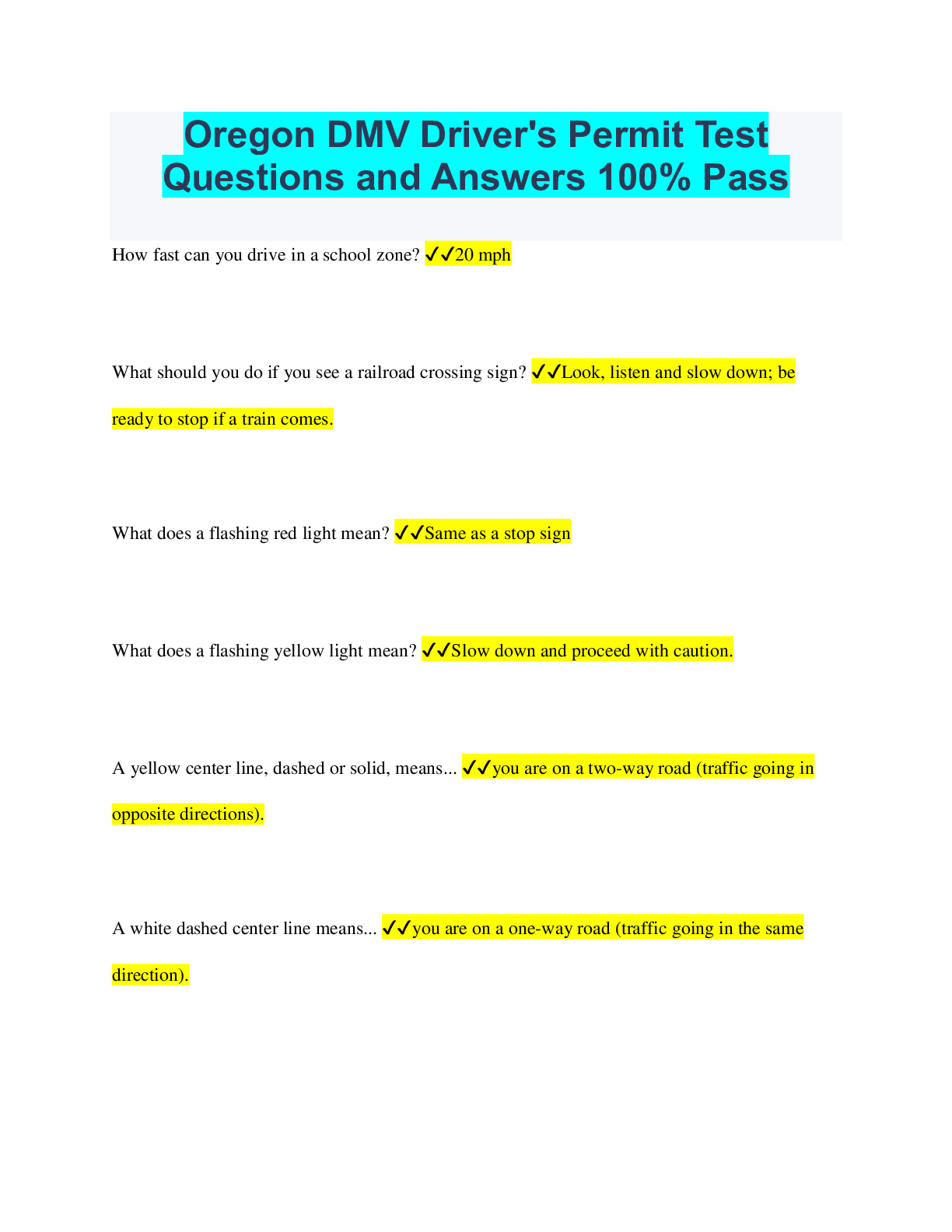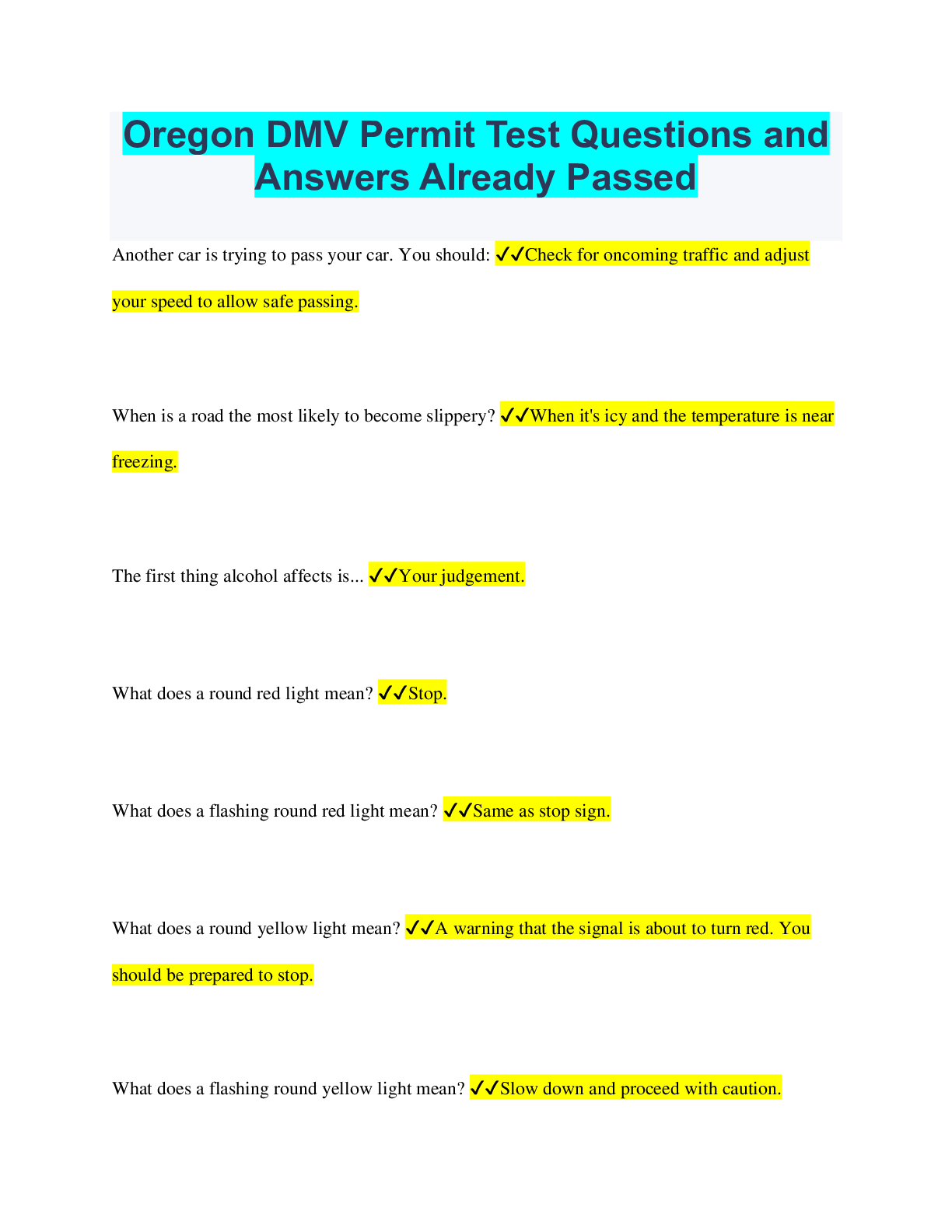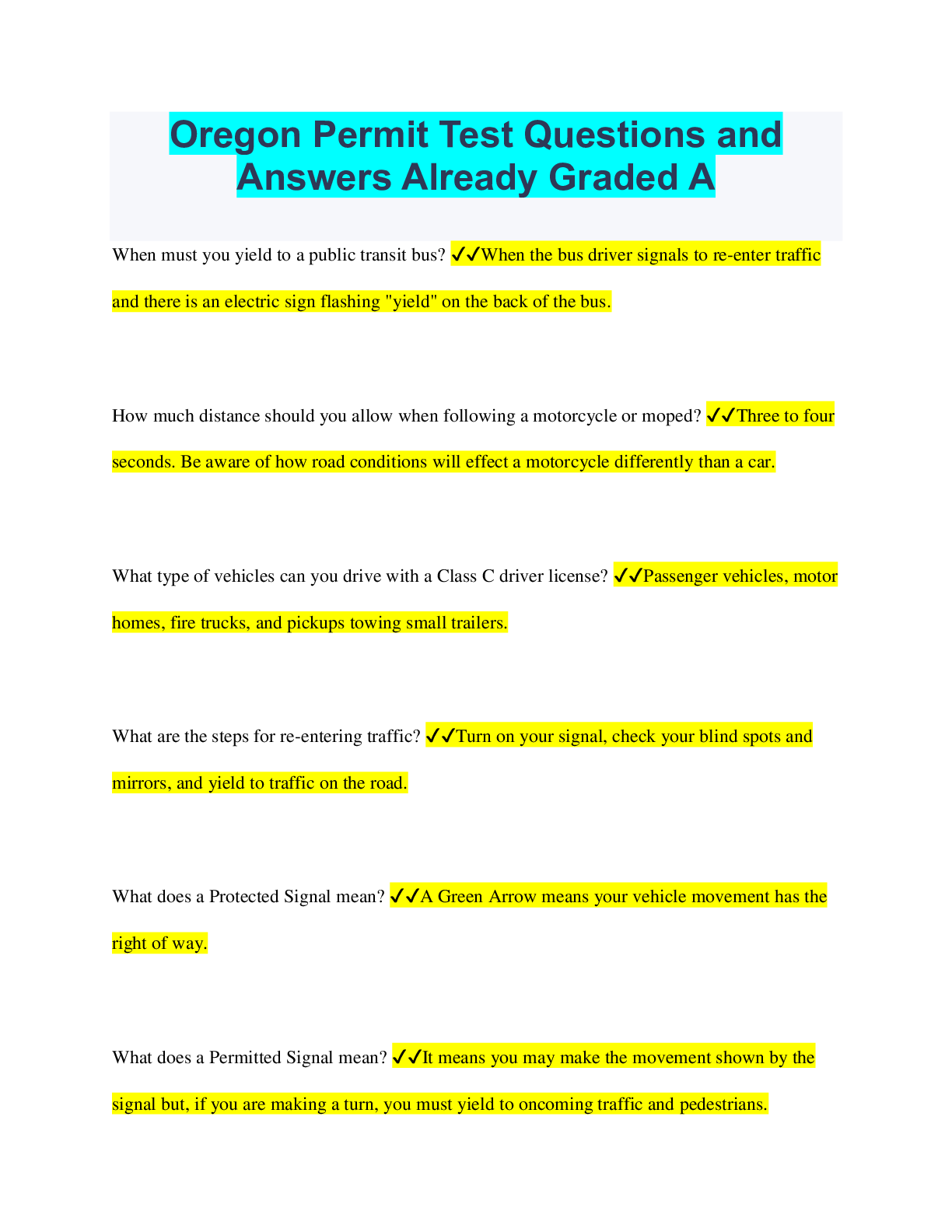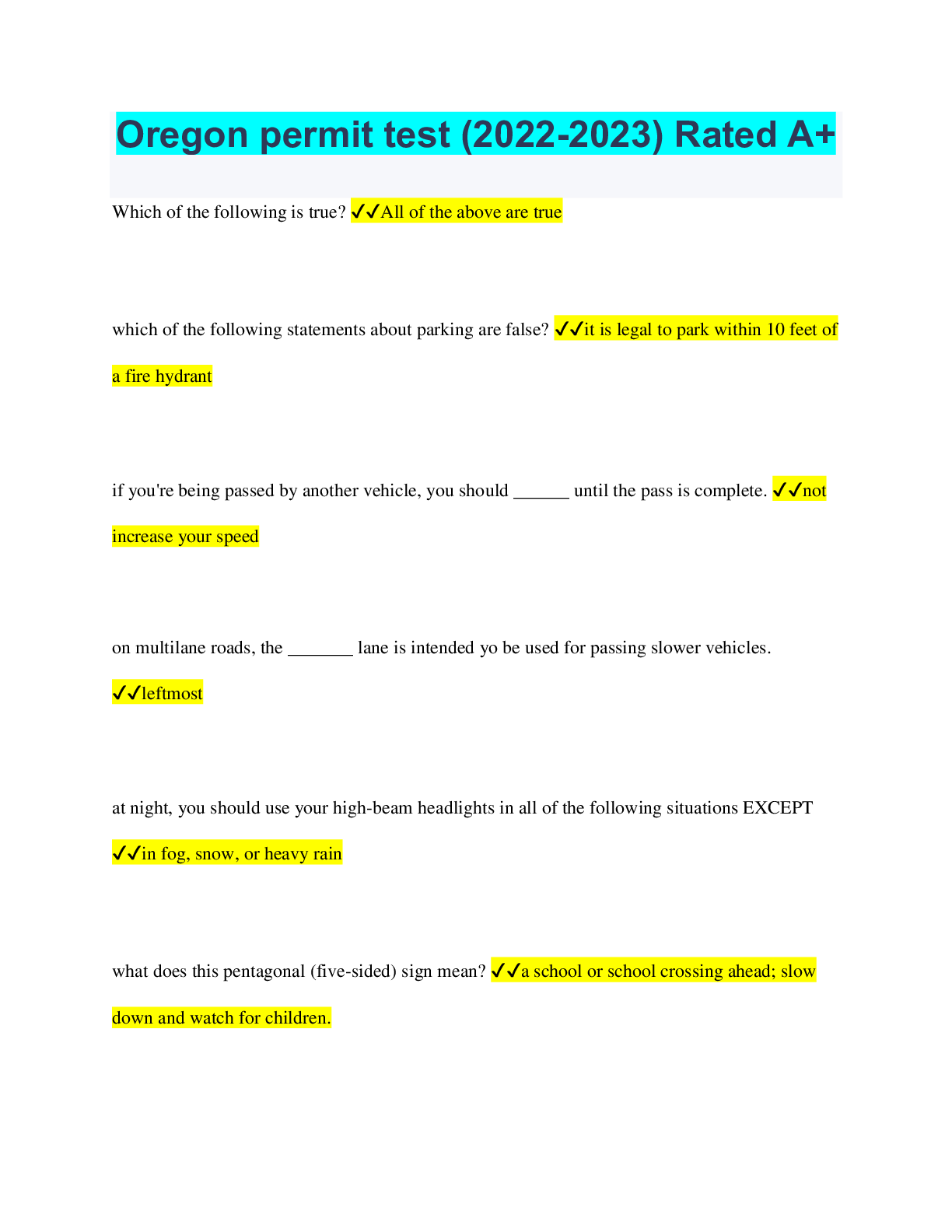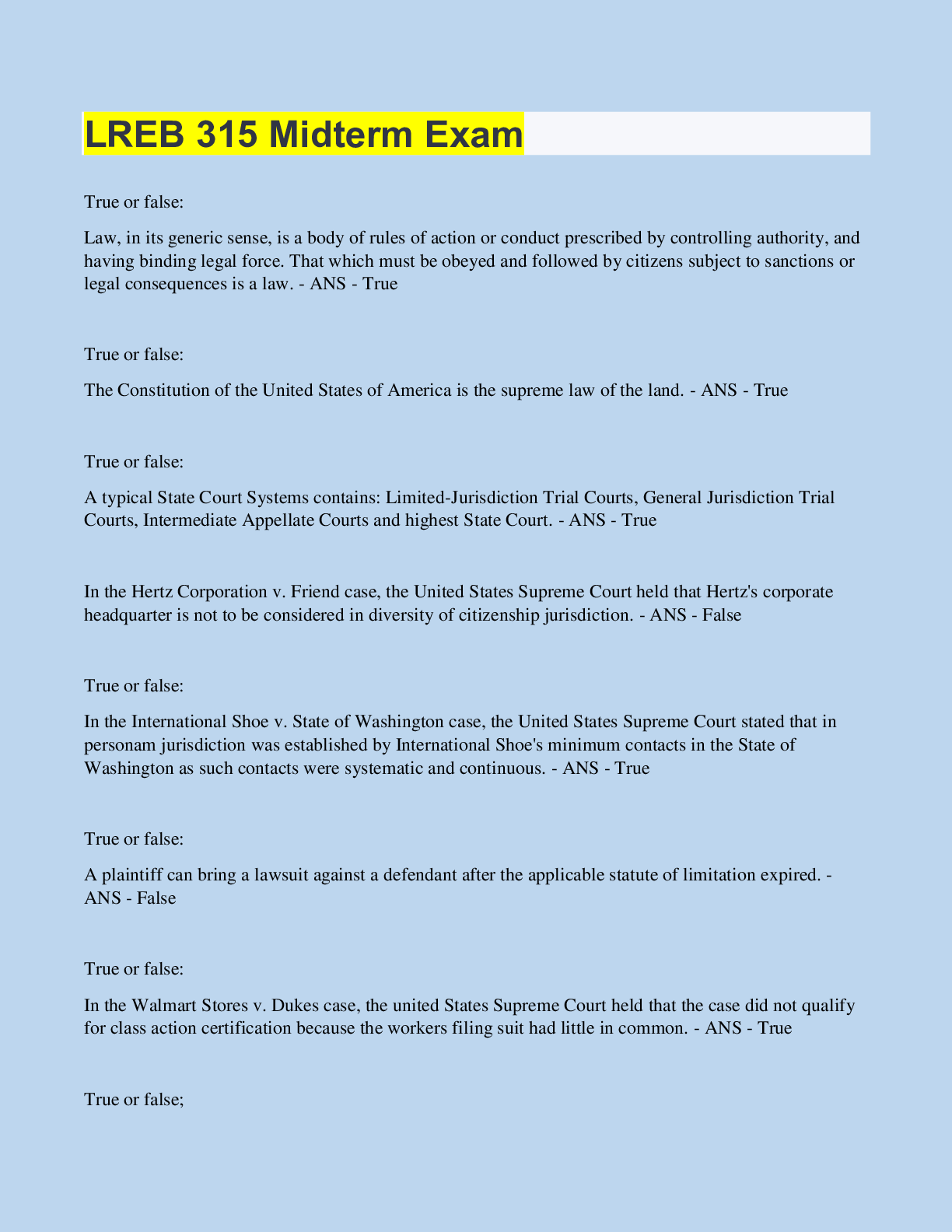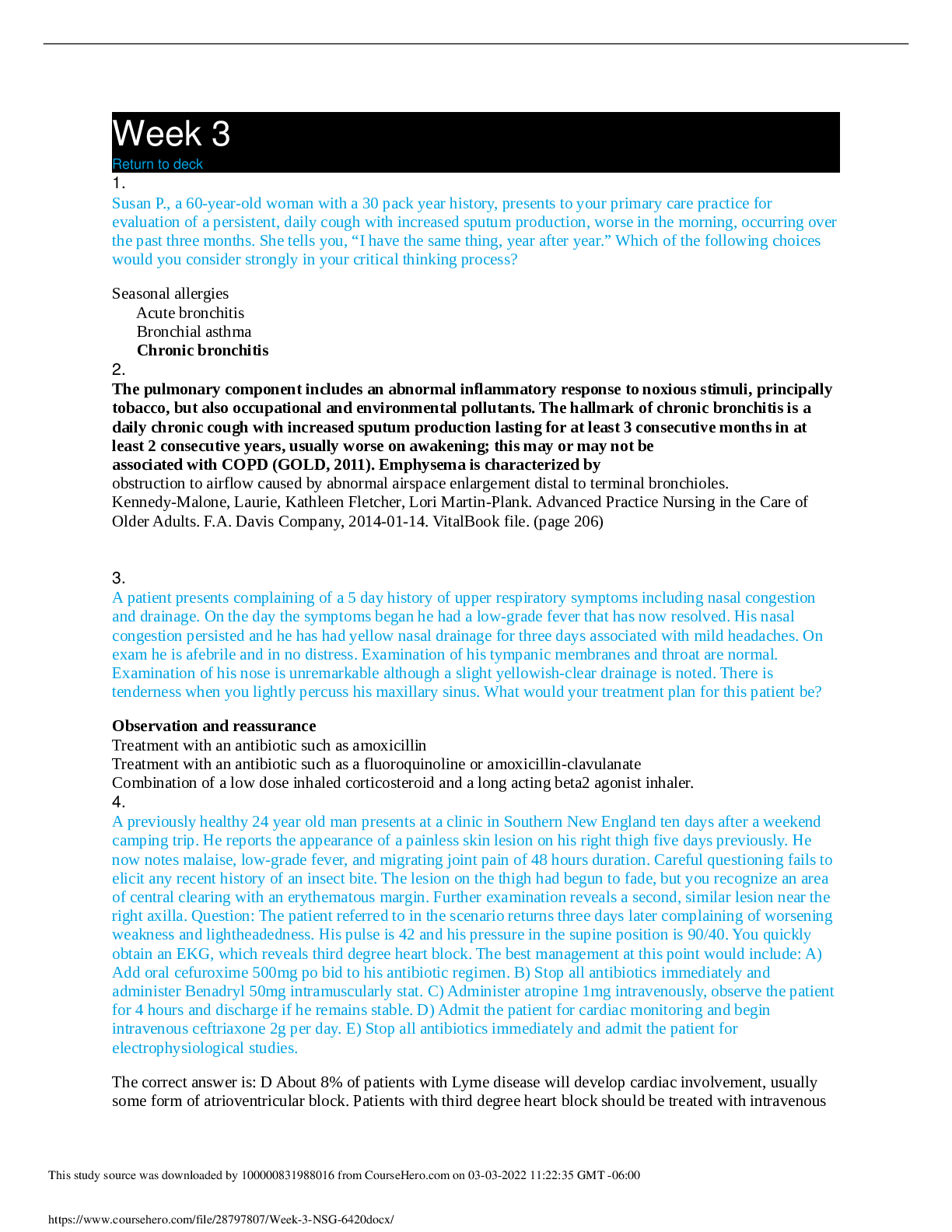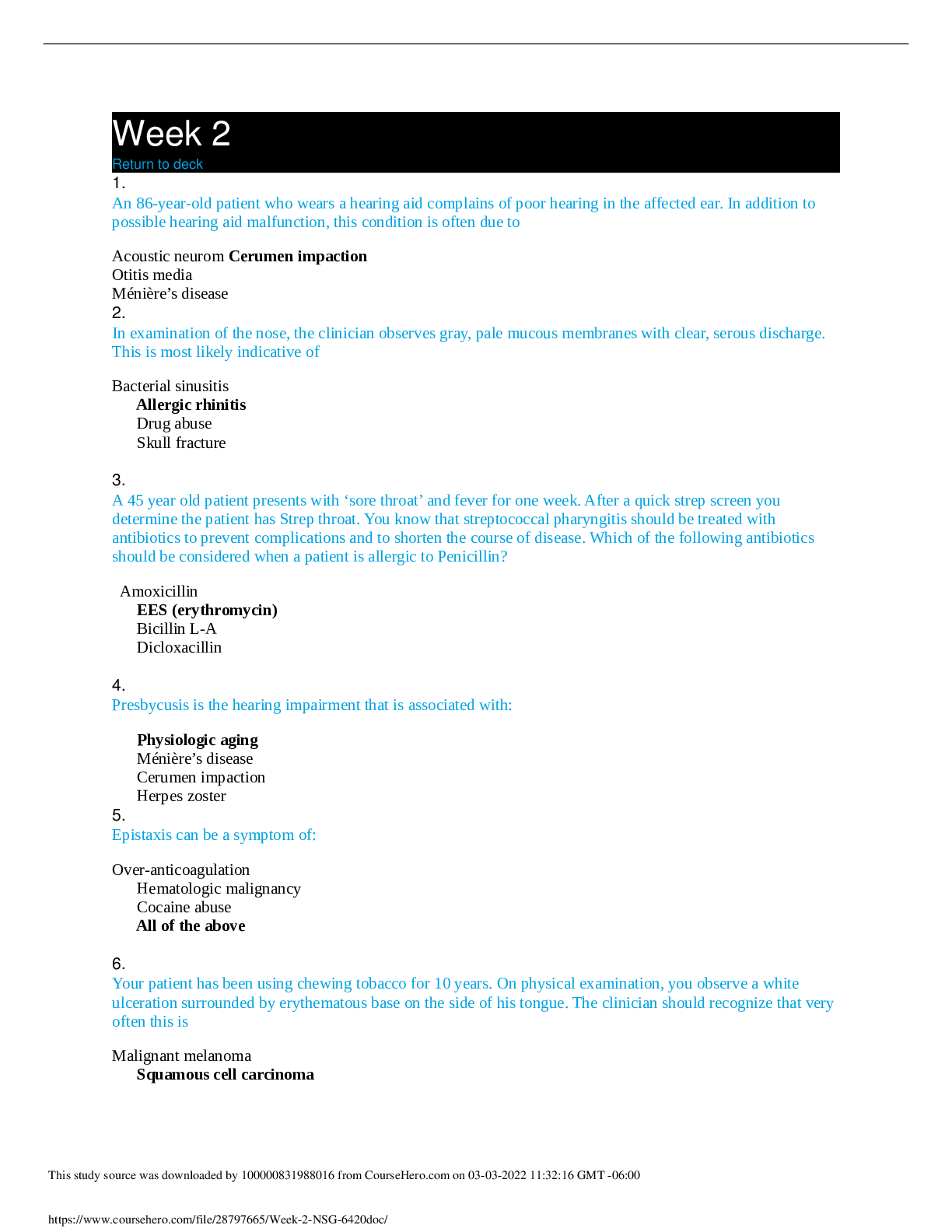*NURSING > QUESTIONS & ANSWERS > NSG 6420 | NSG6420 Week 4 LATEST 2021 (All)
NSG 6420 | NSG6420 Week 4 LATEST 2021
Document Content and Description Below
Quiz 4 Return to deck 1. Where is the point of maximal impulse (PMI) normally located? In the left 5th intercostal space, 7 to 9 cm lateral to the sternum 2. Which of the following correlates wi... th a sustained, high-amplitude point of maximal impulse (PMI)? Hyperthyroidism Anemia Fever Hypertension 3. A 68-year-old woman with hypertension and diabetes is seen by the nurse practitioner for a dry cough that worsens at night when she lies in bed. She has shortness of breath, which worsens when she exerts herself. The patient’s pulse rate is 90/min and regular. The patient has gained 6 lbs over the past two months. She is on a nitroglycerine patch and furosemide daily. The explanation for her symptoms is: Kidney failure Congestive heart failure Angiotensin-converting enzyme (ACE) inhibitor induced coughing Thyroid disease 4. During a routine physical exam of a 90 year old woman, a low-pitched diastolic murmur grade II/VI is auscultated. It is located on the fifth intercostal space on the left side of the midclavicular line. Which is the following is the correct diagnosis? 5. You are performing a cardiac examination on a patient with shortness of breath and palpitations. You have the patient turn onto his left side in the left lateral decubitus position to listen to the heart. Which of the following valvular defects is best heard in this position? Mitral 6. You are concerned that a patient has an aortic regurgitation murmur. Which is the best position to accentuate the murmur? Upright, but leaning forward 7. A 78-year-old retired seamstress comes to the office for a routine check-up. You obtain an ECG (electrocardiogram) because of her history of hypertension. You diagnose a previous myocardial infarction and ask her if she had any symptoms related to this. Which of the following symptoms would be more common in this patient's age group for an acute myocardial infarction? Syncope 8. You are evaluating a 40-year-old banker for coronary heart disease risk factors. He has a history of hypertension, which is well-controlled on his current medications. He does not smoke; he does 45 minutes of aerobic exercise five times weekly. You are calculating his 10-year coronary heart disease risk. Which of the following conditions is considered to be a coronary heart disease risk equivalent? [Show More]
Last updated: 2 years ago
Preview 1 out of 3 pages

Buy this document to get the full access instantly
Instant Download Access after purchase
Buy NowInstant download
We Accept:

Reviews( 0 )
$10.00
Can't find what you want? Try our AI powered Search
Document information
Connected school, study & course
About the document
Uploaded On
Mar 03, 2022
Number of pages
3
Written in
Additional information
This document has been written for:
Uploaded
Mar 03, 2022
Downloads
0
Views
138


.png)


